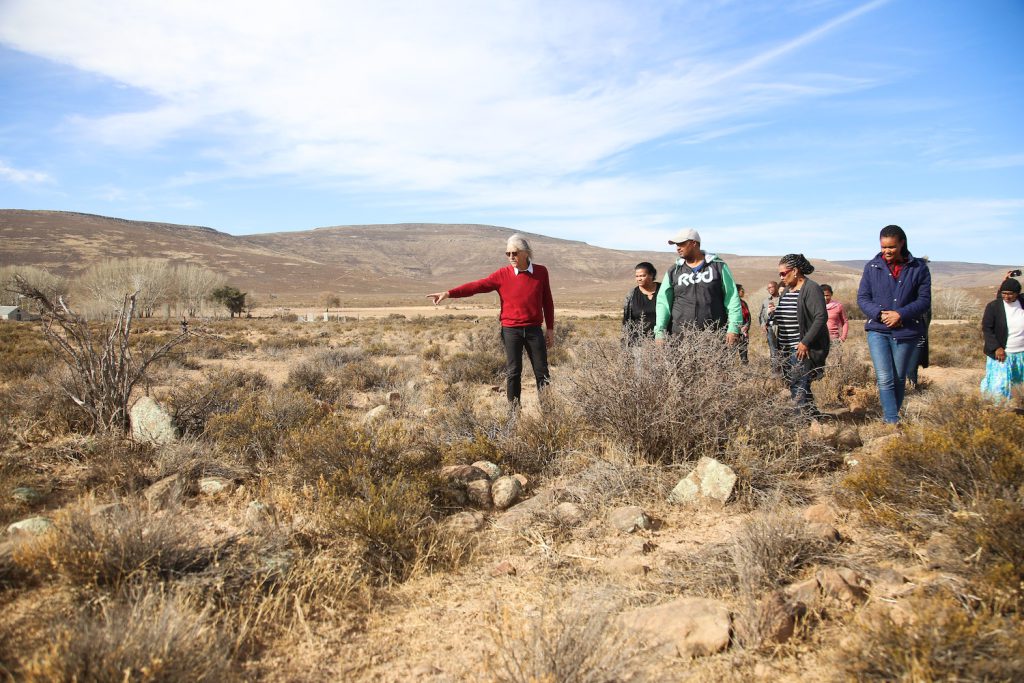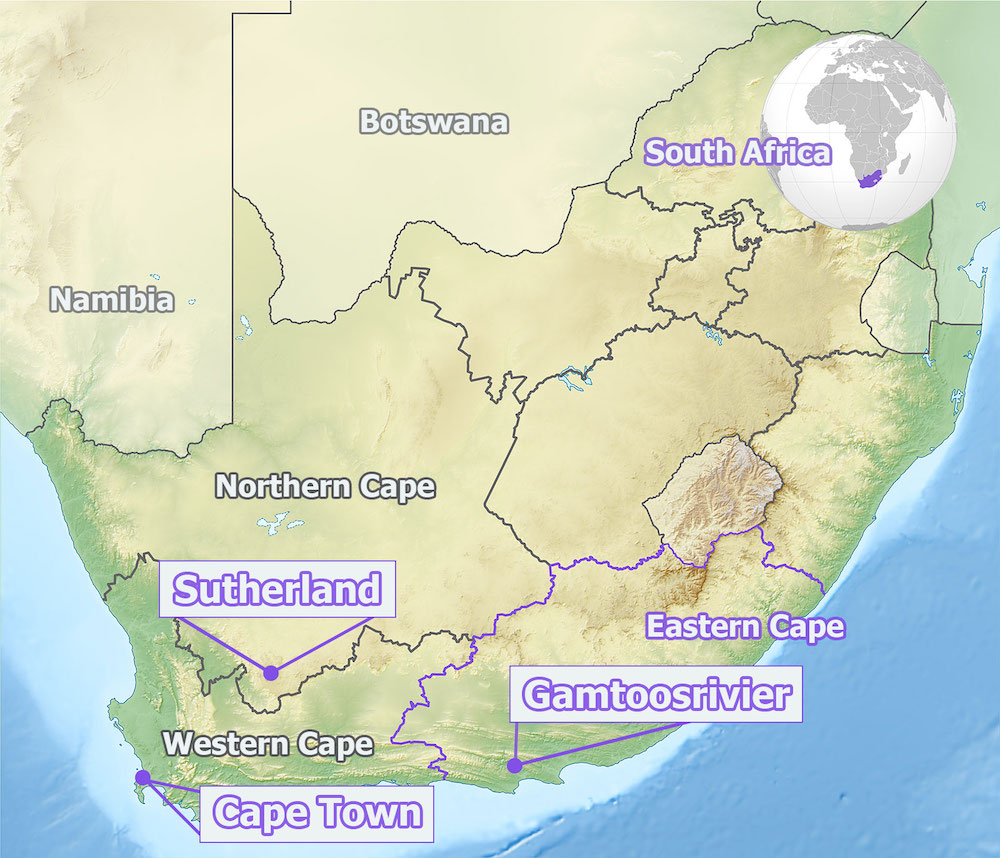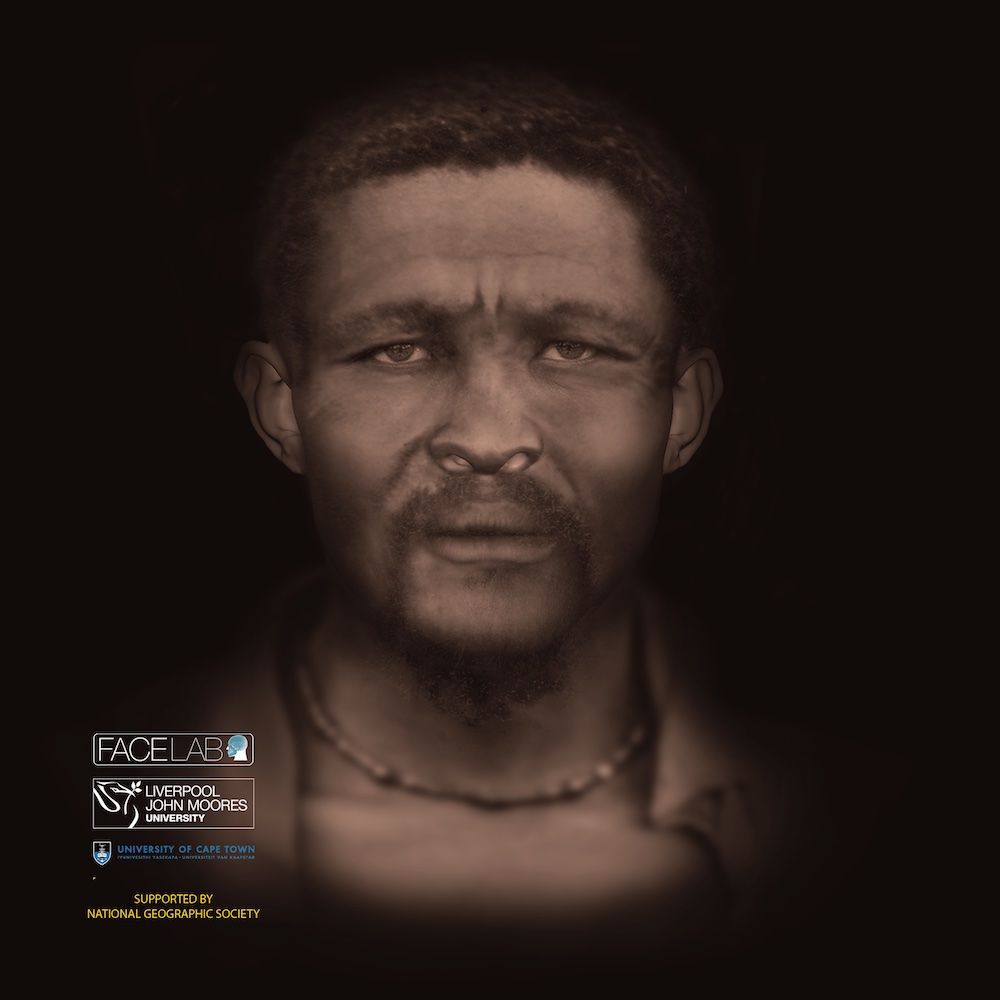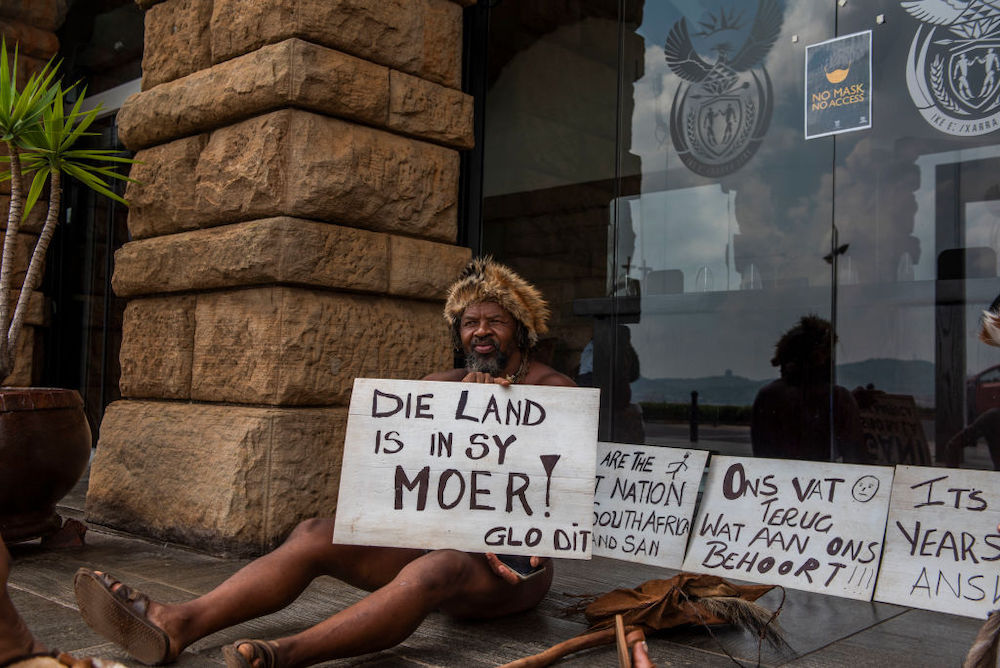Does DNA Simplify or Complicate Repatriation Claims?

In September 2019, the Stuurman family was getting ready for a burial. It was not going to be a typical service.
Nine individuals who had died more than 100 years ago were going to be laid to rest once again. For most of the last century, the University of Cape Town (UCT) in South Africa had stored their remains. Two of them had the last names Stuurman and Abraham.
Anthony Mietas, a descendant of the Stuurmans and a representative for his family based in Sutherland, South Africa, recalls the discovery of the remains as provoking “a turmoil of emotions.”
Eight men, women, and children to be reburied had all died between 1875 and 1913. Their original resting place was a farm in Sutherland where they had lived and worked. (The ninth individual, who lived 700 years ago, lay in the mountains near the farm.) All likely belonged to the Indigenous San or Khoe communities, the region’s first peoples.
The farm, located in the country’s Northern Cape province, could have been their final resting place. But between 1925 and 1931, a medical student at UCT exhumed their remains. Their graves were on his family’s property, and he felt entitled to study their bodies.
UCT’s reburial was therefore meant to right a century-old wrong, returning the unethically obtained remains to the earth. “Our priority was to reconnect [the remains] with their families, to their past, and to their own story,” UCT Vice Chancellor Mamokgethi Phakeng said at a press conference in 2019.
Everything seemed to be in place to lay these people to rest. “But how wrong we were,” Mietas says. The burial would not take place that September. In fact, years later, it still has not occurred.
A branch within the Stuurman family tree, distant relatives living in South Africa’s Eastern Cape, had stepped forward with questions about the remains and wanted to be involved in deciding the resting place of these long-deceased relations. In the months to follow, the Stuurmans of the Eastern Cape made a very specific—and controversial—request.
They wanted DNA analysis linking the remains to living families.
When UCT embarked on this restitution process four years ago, commenters hailed it as a groundbreaking restitution effort in the country. The institution began by seeking out surviving family members.
Today there are many South Africans with the surnames Stuurman and Abraham; there are several families that identify as distant relatives of the people exhumed from the Sutherland farm. The university endeavored to connect with as many stakeholders as possible, including relations in various parts of South Africa. Starting in October 2018, UCT held more than a dozen meetings to discuss next steps.
At the request of involved families, UCT organized studies to get a better sense of the identities and experiences of the deceased. University scientists created facial reconstructions. Research on historical records indicated some of the dead had been captured and forced to work on the farm. Forensic analysis revealed hard, physically strenuous lives, and some individuals had healed traumas such as broken noses, fingers, and cheekbones. Two of the adults died from head trauma.
Isotopic analysis of their bones suggested that they had lived in the dry climate of the Northern Cape. Discussions gradually shifted toward reburial plans, with most participants agreeing to lay the dead near their original resting place in Sutherland.
But in May 2019, when UCT had almost wrapped up its public consultations, the Stuurman family members living in South Africa’s Eastern Cape raised their concerns and objections. This group believes some of the exhumed individuals should be buried in South Africa’s Gamtoosrivier area, about 500 kilometers from Sutherland.
Learn more, from the archive: “The Ethical Battle Over Ancient DNA.”
There is a “deeply spiritual connection,” says Edmund Stuurman, who speaks for this branch within the family and refers to himself as the paramount chief of the “House of Klaas and David Stuurman” in the Eastern Cape. “Our ancestors are speaking through our people, and they want to be buried in our ancestral home.” Burying them elsewhere, he believes, would be a mistake.
Edmund Stuurman and his relatives are now at odds with the rest of the Stuurmans and Abrahams who have engaged in this restitution process. While other family members involved in discussions now believe Sutherland is an appropriate burial site, Edmund Stuurman and his close kin disagree and are not giving up their fight. They believe DNA testing will demonstrate their right to decide the process.
As part of their argument, the Eastern Cape Stuurmans point to a newly published South African repatriation and restitution policy, approved in March, which stipulates that DNA testing can be used to adjudicate conflicting claims. As such, this restitution process—and its challenges—may be a harbinger of things to come.
South Africa has human remains from more than 1,000 unethically obtained individuals in its museum collections. In other cases where many families lay claim to remains, there may be even higher stakes, as when proof of family entitles the living to make a land claim in the country.
The case also has a global resonance, particularly in its ongoing discussion of the role of DNA. Several countries, including the United States and Canada, are increasingly having to wrestle with the question of what genetics tell us about claims to ancestry—and what the costs of these efforts will be, particularly in cases with trauma and reparations.
To follow through on the request by Edmund Stuurman and his close family to study the Sutherland farm remains, scientists would begin by extracting DNA by grinding up a fragment of bone from each exhumed individual. Then the researchers would compare the DNA with that of living descendants.
But geneticists caution that, over the generations, the amount of material shared between ancestors and descendants becomes increasingly small. Several mechanisms help explain this change.
“There’s this idea that DNA is always accurate and can provide all the answers, and that’s not true,” says biological anthropologist Gibbon. “This is not CSI.”
For one, a parent passes on about half their DNA to each child, explains David Balding, a statistical geneticist at the University of Melbourne in Australia. Over five generations—which would equate to roughly 100 years, similar to the age of the Sutherland remains––you would expect only 3 percent of DNA to be shared by descendants.
“From about six generations up,” Balding says, “you start to get a non-negligible chance of sharing no DNA at all despite the relationship being true.”
In addition, the amount of DNA that gets passed from parents to children can vary because of recombination, warns Mark Thomas, an evolutionary geneticist at University College London in the United Kingdom. In this process, pieces of DNA get shuffled around and give rise to new combinations of genetic variants.
However, research continues to expand the possibilities for genetic evidence. In October, Danish scientists confirmed a link between 73-year-old Ernie LaPointe of South Dakota and Sitting Bull, also known as Tatanka Iyotake. Historic evidence and oral tradition suggested LaPointe was the great-grandson of the legendary 19th-century Hunkpapa Lakota Sioux leader.
The Danish team used a small portion of Sitting Bull’s hair (with permission through LaPointe) to extract genetic material that they compared with DNA from LaPointe and several Lakota Sioux tribal members. The scientists then developed a novel method for estimating the probability that these individuals were related, an especially important step because—as has been the case in past research—the data gleaned from the hair was highly limited, making it difficult to find a link with traditional comparative methods.
LaPointe sought the genetic test as proof of connection to arbitrate on the final resting place of Sitting Bull’s remains. Such a technique is unlikely to assist in the Stuurman case, however, which is different in several respects. The Danish researchers needed to establish that LaPointe and his siblings were descendants of Sitting Bull—complementing oral and historical evidence suggesting they were his sole living relatives. In South Africa, certain Stuurman relatives seek to establish their ties to the deceased through genetic analysis to override the decisions made by other branches of the Stuurman family.
In addition, some family members and researchers have reservations about the testing of living relatives in the Stuurman case. Victoria Gibbon, a biological anthropologist at UCT who first identified the century-old Stuurman and Abraham remains in the university’s collection, believes DNA can have a place in certain restitution and repatriation efforts, but should be used as a last resort. Specifically, she notes, it could be a starting point if there is no family information attached to the remains.
However, she is strongly opposed to DNA testing of the living to compare with the deceased to “prove” relationships. “There’s this idea that DNA is always accurate and can provide all the answers, and that’s not true,” adds Gibbon. “This is not CSI.”
Learn more, from our podcast: “Is Your DNA You?”
Her concerns involve larger questions of defining and understanding family ties. She fears, for instance, that genetic information can at times undermine people’s oral history and override valid connections contained in historical records. “There are a lot of means traditionally of tracing descendancy ancestry, which would be completely disregarded through this process,” she says.
Indeed, the Sutherland Stuurman family’s oral history was an essential part of their involvement in UCT’s restitution discussions. Mietas and the Sutherland Stuurmans, for example, understood that they had ancestors in that area and had been wondering what happened to them.
Gibbon’s critiques speak to some of the larger, recurring concerns raised by critics of genetic testing in repatriation discussions. While a DNA test can seem like the straightest line to link human remains with living descendants, a strictly biological approach ignores the complexity of identity. South Africa’s history of colonialism, apartheid, forced migration, and the migrant labor system, for instance, all make identity a fraught issue.
“People were taken from their families in the past,” Gibbon says, “and they were moved into situations where they were forced to form new families that aren’t necessarily biological relatives but, for all intents and purposes, are their family.”
Even without such trauma, a person’s biology is only one strand of who they are.
Ciraj Rassool, a historian and the director of the African program in museum and heritage studies at the University of the Western Cape in South Africa, fears that genetic testing is too often understood as a shortcut or panacea. “There is a desire for an immediately, empirically verifiable solution to the problems of identification and that that is [thought] to be provided by DNA testing,” he says.
This idea, Rassool adds, “does violence to the kind of work that needs to be done”—namely the slow, onerous, and often expensive work of consulting a community.
Keolu Fox, a Native Hawaiian geneticist at the University of California, San Diego, further cautions that genetic information is a resource that can be exploited. “Whether it’s contemporary or modern genomes from Indigenous people, or it’s ancient, it’s still resource extraction,” he says.
While it may help a current repatriation claim, Fox adds, that DNA information can be re-mined. “So, when we have conversations about who’s doing the sequencing, we’re not having transparent conversations about what the data is used to do.”
Indigenous communities have reasons to be concerned. One cautionary example is a Native American tribe in the United States that gave genetic data to scientists to study type 2 diabetes, only to discover years later that it had been used to study a range of topics that were offensive to their cultural viewpoints—without their permission or informed consent.
South Africa’s new repatriation and restitution policy allows for the possibility of using DNA but does not explain where people’s data will be stored and how it will be safeguarded. However, officials say that documentation associated with DNA analyses for repatriation and restitution may be stored at any public museum or National Archives repository.
In addition, while South Africa’s National Health Act of 2003 protects living individuals, scholars are concerned that such heritage information will fall through the cracks of legislation and disciplines. Furthermore, because the country does not have local facilities to perform certain forms of DNA testing—ancient remains would be sent to a laboratory outside the country, for instance—some genetic material may be sent overseas, where other rules might apply.
In August 2021, Anthony Mietas once again thought that his family was headed to a burial. But again, the event was delayed.
Soaring COVID-19 numbers in South Africa pushed the schedules back. At around the same time, the Eastern Cape Stuurman family also wrote to the president’s office, asking that the remains stay in limbo until the government’s new Restitution and Repatriation Office is established, which may take months if not years.
The new policy, which will include the establishment of the Restitution and Repatriation Office, will provide a national framework to facilitate the return of remains and objects from the country’s collections. “It is about the rehumanizing of people,” explains Kgomotso Mokgethi, the director for heritage policy, research, and development within the South African government. “In the past, human remains have been stolen from their graves, they have been boiled down to bones, they have been traded and sold.”
The country’s national department of sports, arts, and culture in Pretoria spearheaded the development of South Africa’s new policy. Though DNA will not be the “go-to” in searching for descendants, Mokgethi says, it will play a role in conflicts where communities are fighting over remains.
In this respect, UCT’s efforts stand as a cautionary tale. It is probable that many other cases will soon come up in which multiple family branches can claim remains and questions about DNA will arise.
Even after learning about some of the limits and risks of DNA testing, Edmund Stuurman says he will continue to fight for genetic analysis. He notes he would still put himself forward for testing, as would members of his family. “If the DNA matches up,” he says, “it will be huge.”
His motivations go beyond just an effort to decide on a burial place for certain exhumed individuals. Edmund Stuurman argues that this testing could offer an opportunity to illustrate that the Khoe and San––and by descent, the Eastern Cape Stuurmans, with a lineage that extends back to the early 1700s––are the original peoples of the country. His interests fit into a timely movement: Despite evidence that San and Khoe communities and their ancestors have lived in Southern Africa for tens of thousands of years, the South African government only formally recognized these Indigenous peoples in 2019.
Indeed, if restitution efforts elsewhere are any guide, political recognition and participation is essential. For instance, archaeologist Brian Hole has argued that many of Aotearoa’s (New Zealand’s) restitution efforts involving Indigenous Māori people have succeeded without the tensions experienced in other nations because of the Māori’s political clout.
Māori people themselves have leadership positions in reparations; the Auckland War Memorial Museum, for example, has a Māori committee known as the Taumata-ā-Iwi, which advises the museum on Māori cultural matters.
South Africa may still be a long way from this kind of approach. Gibbon notes that one obstacle to repatriation efforts in the country is that South Africa does not have a list of recognized traditional leaders for all its Indigenous groups. But the new repatriation policy lays a foundation for such inclusion.
In the meantime, Mietas and his family members in Sutherland are hopeful for a burial in the near future—even as the Eastern Cape branch continues the fight. The delay creates the chance of DNA testing, Edmund Stuurman says. “We can’t let this opportunity pass whilst these remains are still not buried.”



































